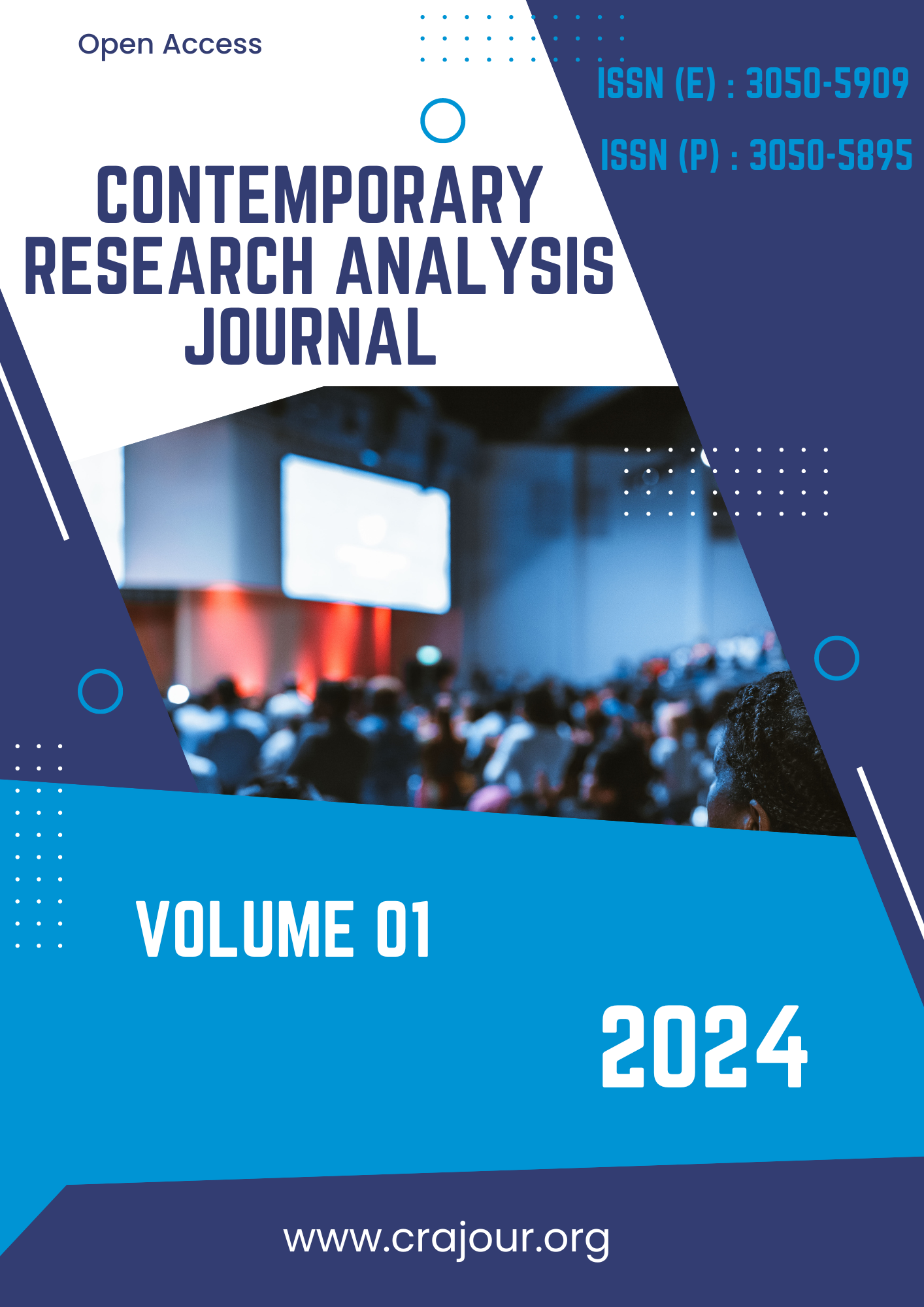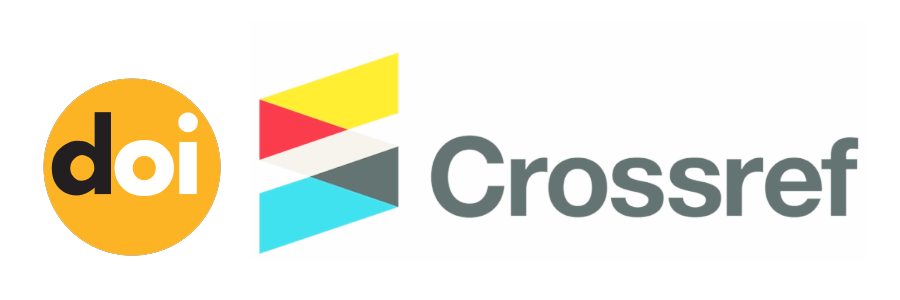Prevalence of Alcohol/ Substance Use among Christian Youth in Selected Churches in Kajiado County, Kenya
DOI:
https://doi.org/10.55677/CRAJ/01-2024-Vol01I4Keywords:
Alcohol, Drug use, youth.Abstract
The last decade has witnessed a sky rocketing increase in alcohol and drug use, where it is estimated that 39.5 million people have substance use disorders (UNODC, 2023). It is opined that religion in the lives of youth can mitigate against alcohol and substance use, but research indicates that in spite of the religious beliefs, there is still a significant proportion of youth in churches who are involved in alcohol and substance use (National Study of Youth & Religion, 2024). Christian youth grappling with alcohol and drug use are caught in between following that which is biblically acceptable versus the societal norms and culture (Swindell, 2010). Thus, investigating the prevalence of alcohol and substance use among Christian youth, is crucial to pinpointing the causative factors and developing targeted programs.
The purpose of this study was to evaluate the prevalence of alcohol/ substance use among Christian youth in four selected churches in Kajiado County, Kenya. It employed a descriptive research design with a sample size of 145 youth (14-35 years;73 male,72 female), who were actively attending Sunday services in the four churches. Data collection utilized the Alcohol, Smoking and Substance Involvement Screening Test- ASSIST- LITE and a socio demographics questionnaire. The data was analyzed quantitatively in SPSS using frequencies and percentages.
Findings from the socio demographic questionnaire inquiring on whether respondents ‘had ever used alcohol/substances’ showed that 53(36.6%) of the respondents affirmed that they had ever used alcohol, 12(8.3%) both khat and alcohol, 3(2.1%) khat, hash and alcohol while 5(3.4%) had ever used other substances and alcohol. The ASSIT-Lite inquired on alcohol and drug use in the past three months, where the most frequently used was alcohol at n=42(28.9%), then cannabis at n=27(18.6%), sedatives at n=14(9.7%), stimulants at n=10(6.9%), psychoactive substances at n=6(4.1%) and then opioids at n=3(2.1%). Of the alcohol/substance users, 12(8.3%), 7(4.8%) and 5(3.4%) were at high risk levels for alcohol, cannabis and stimulant use respectively.
The study was informative in that, it revealed Christian youth were still grappling with alcohol/substance use, and hence, targeted psychological and behavioral interventions, alongside the church-based programs are necessary.
References
Andrea, G., Frédéric, D., Marie-Emmanuelle, K., Guillaume, K., Caroline, C., Moustapha, D., & Sébastien, G. (2016). Evaluation of addiction among students in first year of a French University. Open Journal of Preventive Medicine, 6(1), 42-56.
Curtis, B. L., Lookatch, S. J., Ramo, D. E., McKay, J. R., Feinn, R. S., & Kranzler, H.R. (2018). Meta-Analysis of the Association of Alcohol-Related Social Media Use with Alcohol Consumption and Alcohol-Related Problems in Youth and Young Adults. Alcoholism, clinical and experimental research, 42(6), 978– 986. https://doi.org/10.1111/acer.13642
Grim B.J., & Grim M.E.(2019). Belief, Behavior, and Belonging: How Faith is Indispensable in Preventing and Recovering from Substance Abuse. J Relig Health,58(5):1713-1750. doi: 10.1007/s10943-019-00876-w.
Fernandez, M. E., Daset, L., Vanderplasschen, W., Ball, C. D. C., Van Damme, L., & Vindevogel, S. (2017). Risk and protective factors for alcohol use among school-going youth in Montevideo (Uruguay). Drugs and Alcohol Today, 17(1), 12-22.
Haruna, M. O., Namadi, M. M., Dunkrah, B. L., Zamfara, M. I., & Dangiwa, A. L. (2018). Substance abuse among youths in Kashere town: A theoretical and empirical analysis. International Journal of Development and Management Review, 13(1). https://www.ajol.info/index.php/ljdmr/article/view/172287/161686
Hawke, L. D., Wilkins, L., & Henderson, J. (2020). Early cannabis initiation: Substance use and mental health profiles of service-seeking youth. Journal of Adolescence, 83, 112-121.
Hosseini, J., Shojaeefar, E., Pooladgar, P., Aliakbari, F., Ganji, M., Hamdieh, M., Kheradmand, A., & Fashami, M. A. (2022). Prevalence of substance use among Iranian male youth: Systematic review and meta-analysis. Health science reports, 5(6), e885. https://doi.org/10.1002/hsr2.885
Jochman, J. C., & Schwadel, P. (2024). Religious Correlates of Religious Victimization in Youth: Findings from Two Nationally Representative Surveys. Journal for the Scientific Study of Religion.
Kantawong, E., Kao, T. S. A., Robbins, L. B., Ling, J., & Anderson‐Carpenter, K. D. (2024). The role of psychosocial factors and biological sex on rural Thai youth' drinking intention and behaviours: A structural equation model. Journal of Advanced Nursing, 80(4), 1393-1404.
Magidson, J. F., Dietrich, J., Otwombe, K. N., Sikkema, K. J., Katz, I. T., & Gray, G.E. (2017). Psychosocial correlates of alcohol and other substance use among low-income youth in peri-urban Johannesburg, South Africa: A focus on gender differences. Journal of health psychology, 22(11), 1415-1425.
Manyike, P. C., Chinawa, J. M., Chinawa, A. T., Obu, H. A., Nwokocha, A. R., & Odetunde, O. I. (2016). Correlates for psycho-active substance use among boarding secondary school youth in Enugu, South East, Nigeria. BMC pediatrics, 16, 1-8.
National Study of Youth & Religion (2024) https://youthandreligion.nd.edu/related-resources/preliminary-research-findings/significant-numbers-of-religiously-active-teenagers-are-involved-in-serious-risk-behaviors-involving/
Nwagwu, W. E. (2017). Social networking, identity and sexual behaviour of undergraduate students in Nigerian universities. The Electronic Library, 35(3), 534-558.
Olaore, A. Y. (2013). Youth, religiosity and substance abuse: A Nigerian private university experience. Research on Humanities and Social Sciences, 3(16), 83- 86.
Olurishe, T. O. (2019). Drug and substance abuse in Anglophone West Africa: a mini review. West Afr J Pharm, 30(21), 1-12.
Peacock, A., Leung, J., Larney, S., Colledge, S., Hickman, M., Rehm, J., ... & Degenhardt, L. (2018). Global statistics on alcohol, tobacco and illicit drug use: 2017 status report. Addiction, 113(10), 1905-1926.
Ranker, L. R., Ross, C. S., Rudolph, A. E., Weuve, J., & Xuan, Z. (2023). Identifying and describing trajectories of alcohol use frequency and binge drinking frequency among those aged 15–30 years in a national cohort of US youth: A group‐based trajectory modeling approach. Addiction, 118(9), 1739-1750.
Saunders, D., Sussman, T., Corbeil, T., Canino, G., Bird, H., Alegria, M., & Duarte, C. S. (2023). Development, religious affiliation, and social context: Substance use disorders in Puerto Rican transitional age youth. Frontiers in Psychiatry, 14, 1076869.
Scott Jr, L. D., Hodge, D. R., White, T., & Munson, M. R. (2018). Substance use among older youth transitioning from foster care: Examining the protective effects of religious and spiritual capital. Child & Family Social Work, 23(3), 399-407.
UNODC (2023). https://www.unodc.org/unodc/en/data-and-analysis/world-drug-report-2023.html
WHO(2024).https://www.who.int/news-room/fact-sheets/detail/alcohol#:~:text=An%20estimated%20400%20million%20people,population) %20lived%20with%20alcohol%20dependence.
Downloads
Published
Issue
Section
License
Copyright (c) 2024 Contemporary Research Analysis Journal

This work is licensed under a Creative Commons Attribution 4.0 International License.



